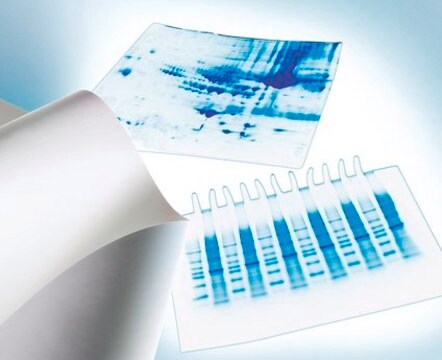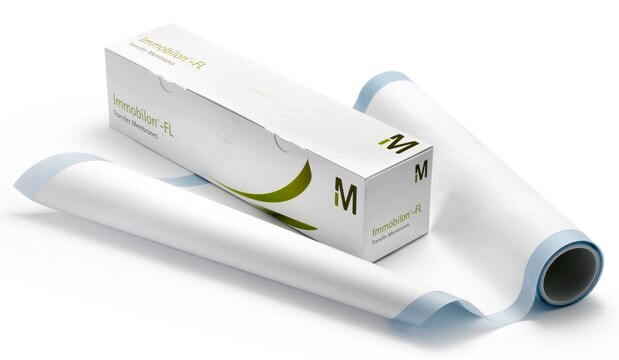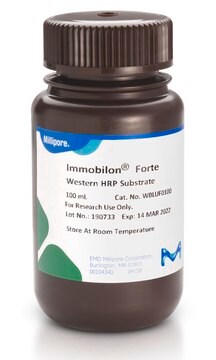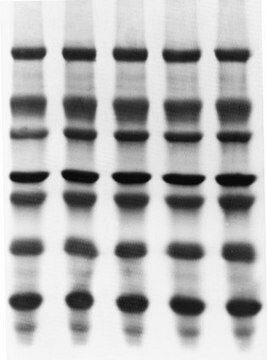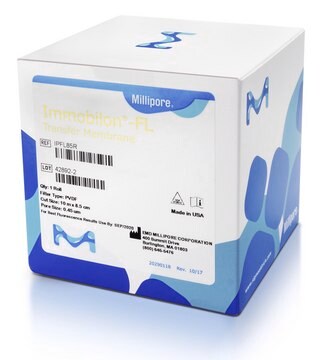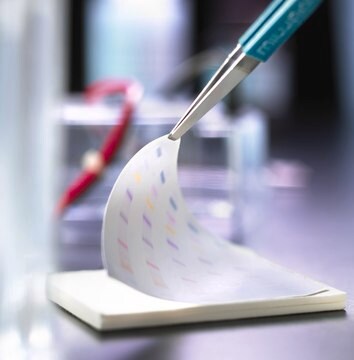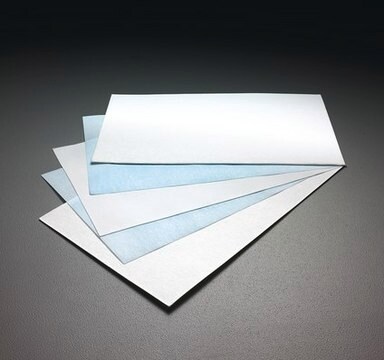IPVH07850
Immobilon® -P PVDF Membrane
50 sheets, 7 cm x 8.4 cm, 0.45 µm pore size, transfer membrane
Synonim(y):
Western blotting membrane, blotting membrane, mini blots, transfer membrane
About This Item
Polecane produkty
product name
Immobilon®-P PVDF Membrane, 50 sheets, 7 cm x 8.4 cm, 0.45 µm pore size, Hydrophobic PVDF Transfer Membrane for western blotting.
Materiały
PVDF membrane
plain filter
white filter
Poziom jakości
Właściwości
hydrophobic
producent / nazwa handlowa
Immobilon®
metody
dot blot: suitable
western blot: suitable
filtr dł. × szer.
7 cm × 8.4 cm
wielkość porów
0.45 μm pore size
pojemność
160 μg/cm2 adsorption capacity (insulin)
215 μg/cm2 adsorption capacity (BSA)
294 μg/cm2 adsorption capacity (goat IgG)
kompatybilność
for use with Amido black
for use with CPTS
for use with Colloidal gold
for use with Coomassie brilliant blue
for use with India ink
for use with Ponceau-S red
for use with Sypro<TMSYMBOL></TMSYMBOL> ruby
for use with Toluidine blue
for use with Transillumination
metoda wykrywania
chemiluminescent
colorimetric
fluorometric
radioactive
Warunki transportu
ambient
Opis ogólny
Primary Binding Mechanisms: Electrostatic, hydrophobic;
Filter Code: IPVH
Zastosowanie
Cechy i korzyści
- excellent protein retention
- high physical strength
- broad chemical compatibility
- suitable for a variety of staining applications and reprobing in immunodetection methods
Informacje prawne
Kod klasy składowania
11 - Combustible Solids
Klasa zagrożenia wodnego (WGK)
WGK 3
Temperatura zapłonu (°F)
Not applicable
Temperatura zapłonu (°C)
Not applicable
Certyfikaty analizy (CoA)
Poszukaj Certyfikaty analizy (CoA), wpisując numer partii/serii produktów. Numery serii i partii można znaleźć na etykiecie produktu po słowach „seria” lub „partia”.
Masz już ten produkt?
Dokumenty związane z niedawno zakupionymi produktami zostały zamieszczone w Bibliotece dokumentów.
Klienci oglądali również te produkty
Nasz zespół naukowców ma doświadczenie we wszystkich obszarach badań, w tym w naukach przyrodniczych, materiałoznawstwie, syntezie chemicznej, chromatografii, analityce i wielu innych dziedzinach.
Skontaktuj się z zespołem ds. pomocy technicznej